Emotional Regulation Activities for Kids: How to Regulate Children’s Emotions
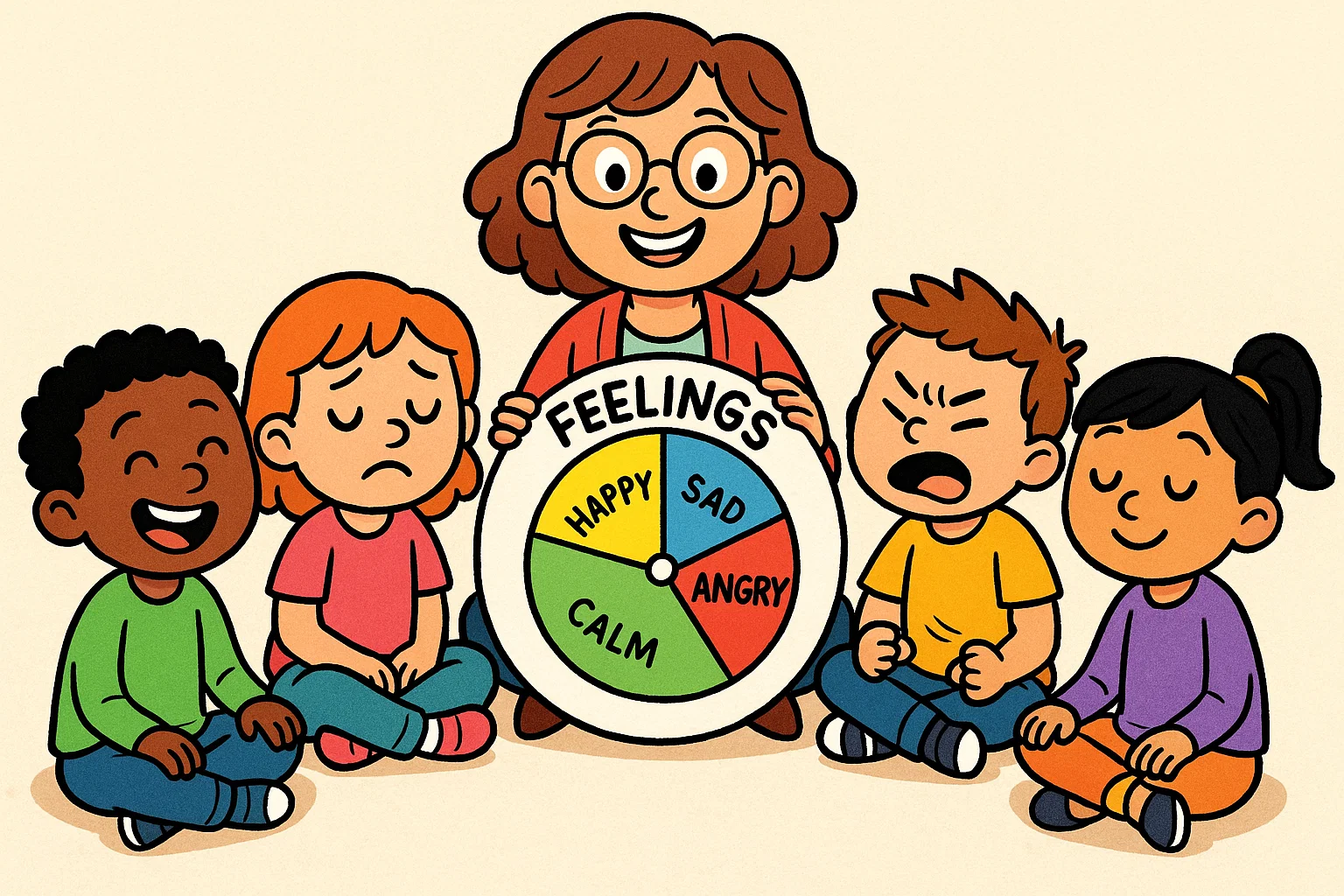
When your child has an emotional outburst, it can feel like a storm hitting your home. One minute, everything’s fine; the next, a small frustration—a dropped toy, a changed plan—erupts into big emotions, tears, or screaming. It’s a common experience for many parents and caregivers, and it often leaves us wondering, “How do I help my child manage their emotions?” The answer lies in teaching them emotional regulation skills. This isn’t about stopping them from feeling things, but rather giving them the tools to understand, express, and manage their feelings in healthy ways.
This guide is designed to help you teach your child these vital skills. We’ll explore what emotional regulation is, why it’s so important for your child’s development, and provide you with practical, evidence-based strategies and fun activities you can use today. By fostering these skills, you’ll be helping your child build a foundation for a lifetime of resilience, emotional intelligence, and overall well-being.
What is Emotional Regulation?
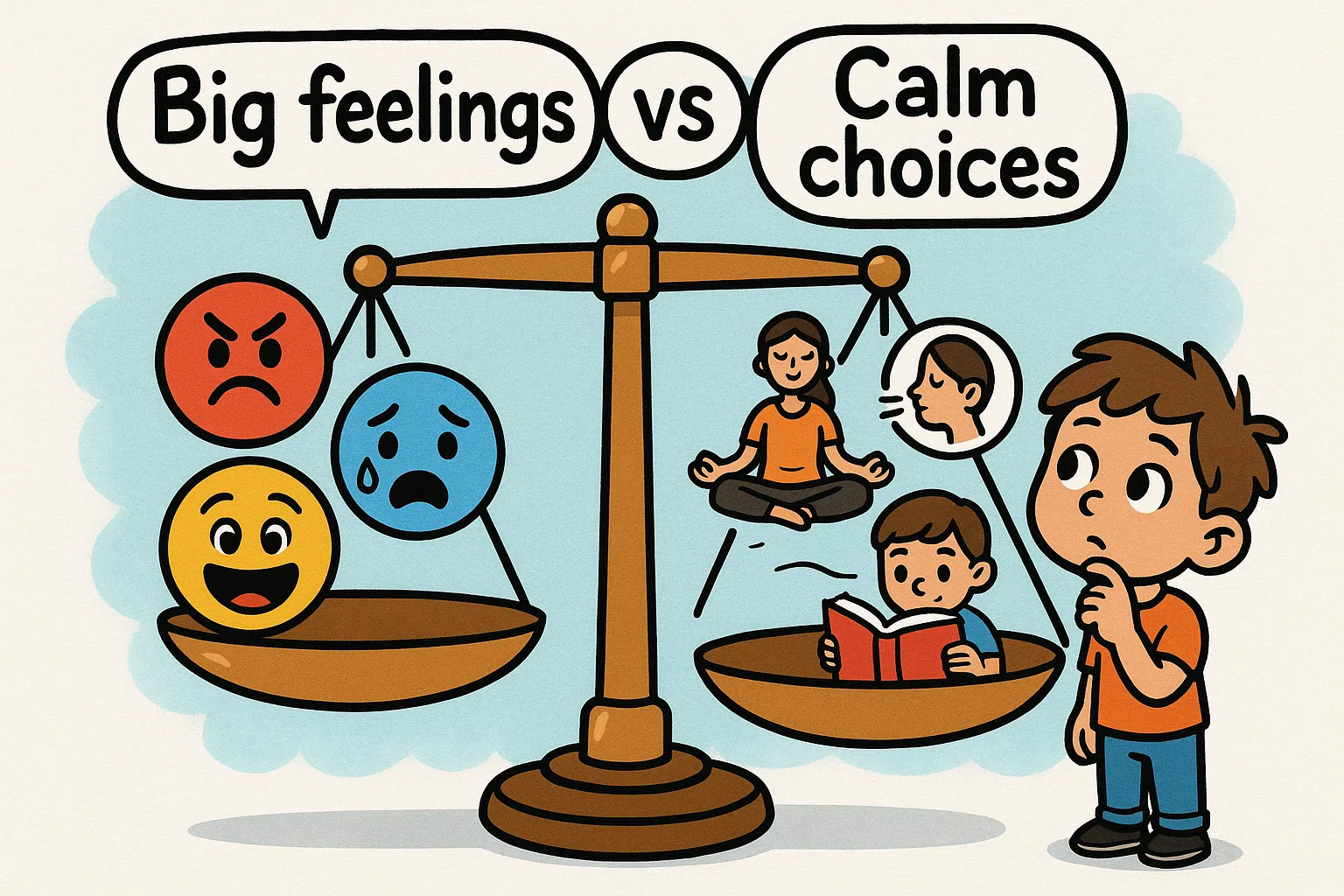
Emotional regulation is a child’s ability to manage their emotional experiences, including the intensity and duration of their feelings. It’s an internal process that involves understanding what they’re feeling, recognizing the physical and mental cues associated with those feelings, and then choosing a helpful way to respond rather than reacting impulsively. This skill is foundational for a child’s social and academic success.
Definition of Emotional Regulation in Childhood
At its core, emotional regulation is the ability to manage and respond to an emotional experience. It’s a complex psychological process that starts in infancy and develops throughout childhood and adolescence. For a child, this means learning to soothe themselves when upset, to calm their bodies, and to think clearly even when their big emotions feel overwhelming. It’s the difference between a child who says, “I’m so frustrated!” and one who throws a toy across the room. Emotional regulation is essential for a child’s mental health, helping them navigate stress, build healthy relationships, and cope with life’s challenges. Research published in BMC Psychology shows that children with stronger emotional regulation skills tend to display fewer symptoms of anxiety and depression, highlighting the long-term importance of developing these abilities early in life.
Emotional Regulation vs. Self-Regulation
While the terms emotional regulation and self-regulation are often used interchangeably by parents and teachers, there is a subtle but important difference. Emotional regulation specifically refers to managing emotions. Self-regulation, on the other hand, is a broader skill that includes managing thoughts, actions, behaviors, and emotions. For example, a child using self-regulation might choose to wait their turn patiently (behavioral), not give up on a tricky puzzle (cognitive), and stay calm when they lose a game (emotional).
Both skills are crucial and work together. When a child learns to regulate their emotions, it becomes much easier for them to regulate their behavior and attention. Many of the activities designed to teach one skill will also help with the other.
Signs of Emotional Dysregulation
When a child struggles with emotional regulation, they may show signs of emotional dysregulation. This isn’t a diagnosis, but rather a description of a child’s difficulty in managing their emotions effectively. Here are some practical examples of what this might look like:
- Frequent or intense tantrums that don’t match the situation—for example, screaming, crying, or hitting over something minor.
- Excessive crying that lasts for a long time and is hard to soothe.
- Meltdowns or emotional outbursts that are difficult to de-escalate.
- Impulsive actions like hitting, biting, or pushing when they feel frustrated or angry.
- “Shutting down” or withdrawing completely when faced with a difficult feeling. A child might become quiet, refuse to talk, or hide.
- Trouble transitioning between activities, leading to anxiety or outbursts.
- Refusing to follow directions or being overly oppositional when upset.
Noticing these signs is the first step toward helping your child develop their emotional regulation skills.
Emotional Regulation Activities for Kids
Once your child can recognize their emotions, you can introduce them to concrete strategies to help them manage their emotions. These activities are designed to be fun and engaging, making it easier for kids to use them when they need to.
Breathing Exercises and Mindful Breaths
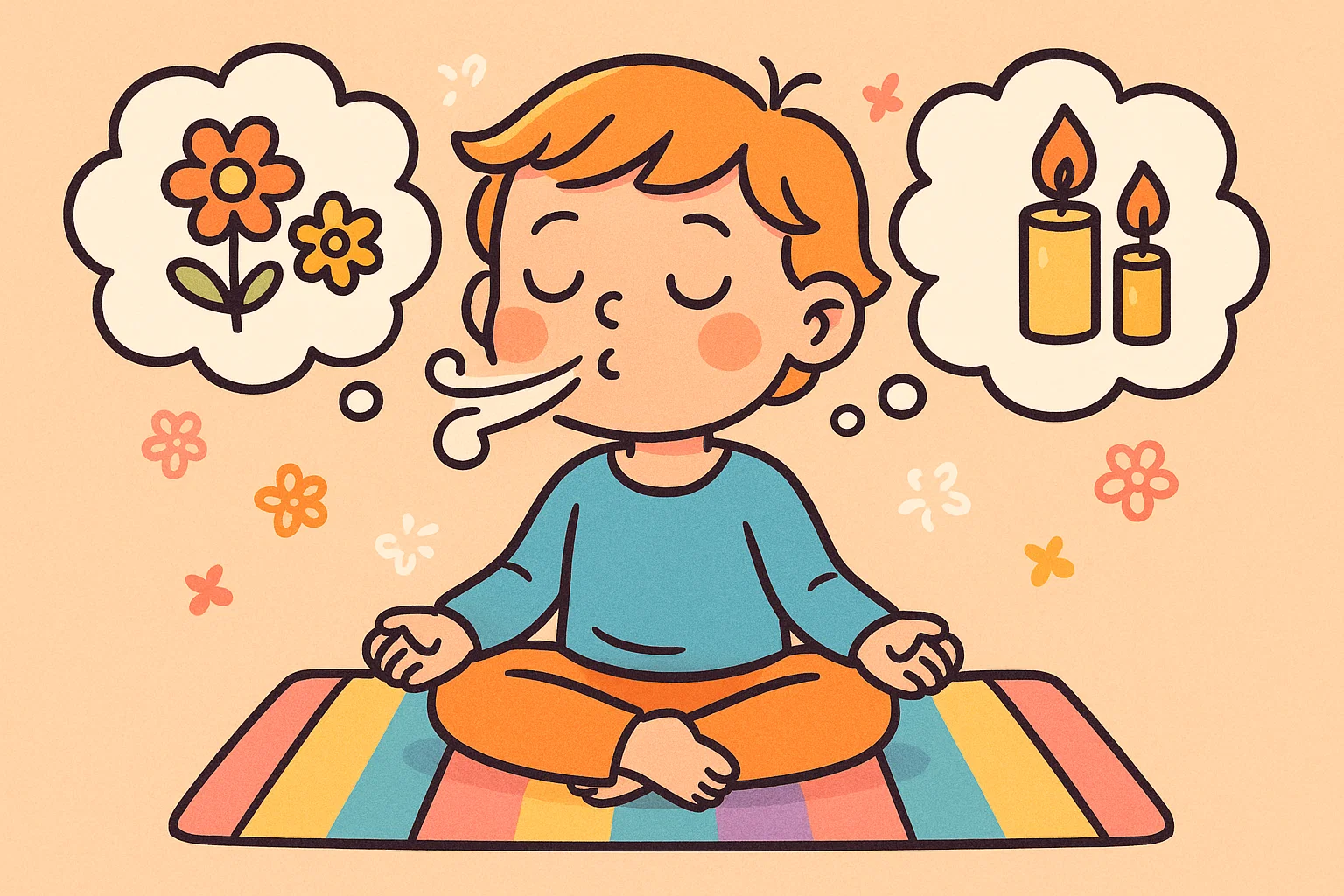
Deep breaths are a classic regulation tool for a reason: they activate the body’s parasympathetic nervous system, which helps calm the body and mind. Make the practice fun so kids are more likely to use it.
- “Smell the Flowers, Blow the Candles”: Have your child inhale deeply through their nose (smelling a flower) and then exhale slowly and forcefully through their mouth (blowing out birthday candles).
- “Balloon Breathing”: Tell them to pretend their belly is a balloon. As they inhale, the balloon fills up (their belly expands); as they exhale, the balloon deflates.
- “Snake Breath”: Inhale through the nose and then exhale slowly through pursed lips, making a long “ssssss” sound like a snake.
Relaxation Corner or Calm Down Space
Create a special, designated space in your home where your child can go to regulate their emotions. This isn’t a place for punishment but a safe haven.
- Fill it with sensory items: A soft blanket, a few stuffed animals, sensory bottles with glitter, a small squishy stress ball, or a weighted blanket can be helpful for kids.
- Add calming elements: Soft lighting, a pair of noise-canceling headphones, or a small speaker with calming music or nature sounds.
Movement-Based Activities
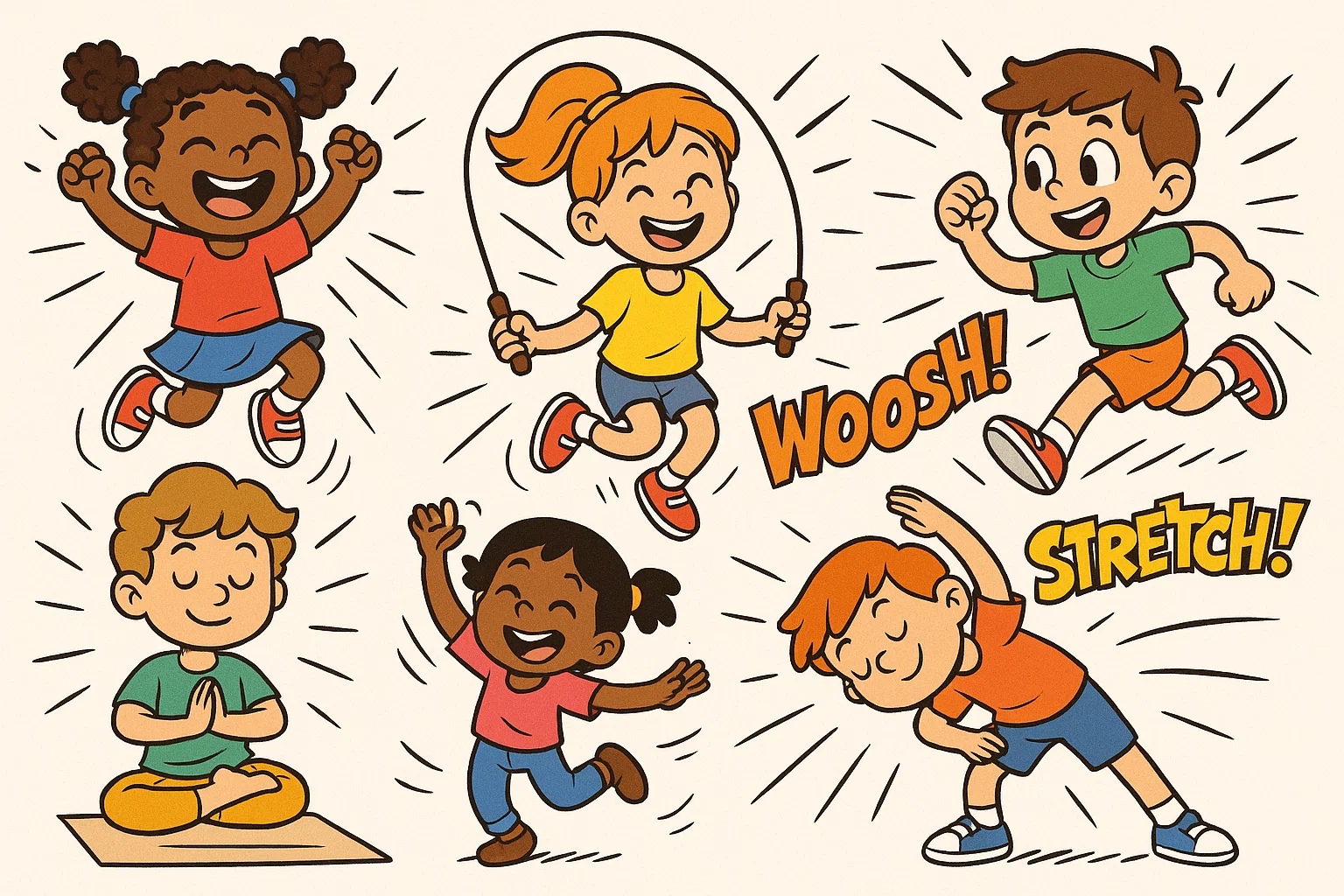
Sometimes, big emotions feel like they’re trapped inside the body. Movement is a great way to release built-up energy and frustration.
- “Animal Walks”: Have your child do crab walks, bear crawls, or frog jumps to use up some energy.
- Stretching: Gentle stretching can release physical tension.
- Heavy Work Activities: Pushing a laundry basket across the floor, carrying a stack of books, or helping to move a pillow can be incredibly grounding.
Sensory Play and Tools
Sensory input can be very calming and grounding for the nervous system. An occupational therapist often recommends these tools to help children with self-regulation.
- Playdough or slime: Squeezing and molding can be a great release.
- Water play: Splashing or pouring water is soothing for many kids.
- Fidget tools: A tangle toy, stress ball, or pop-it can give a child’s hands something to do while they process a big emotion.
Games for Emotional Awareness
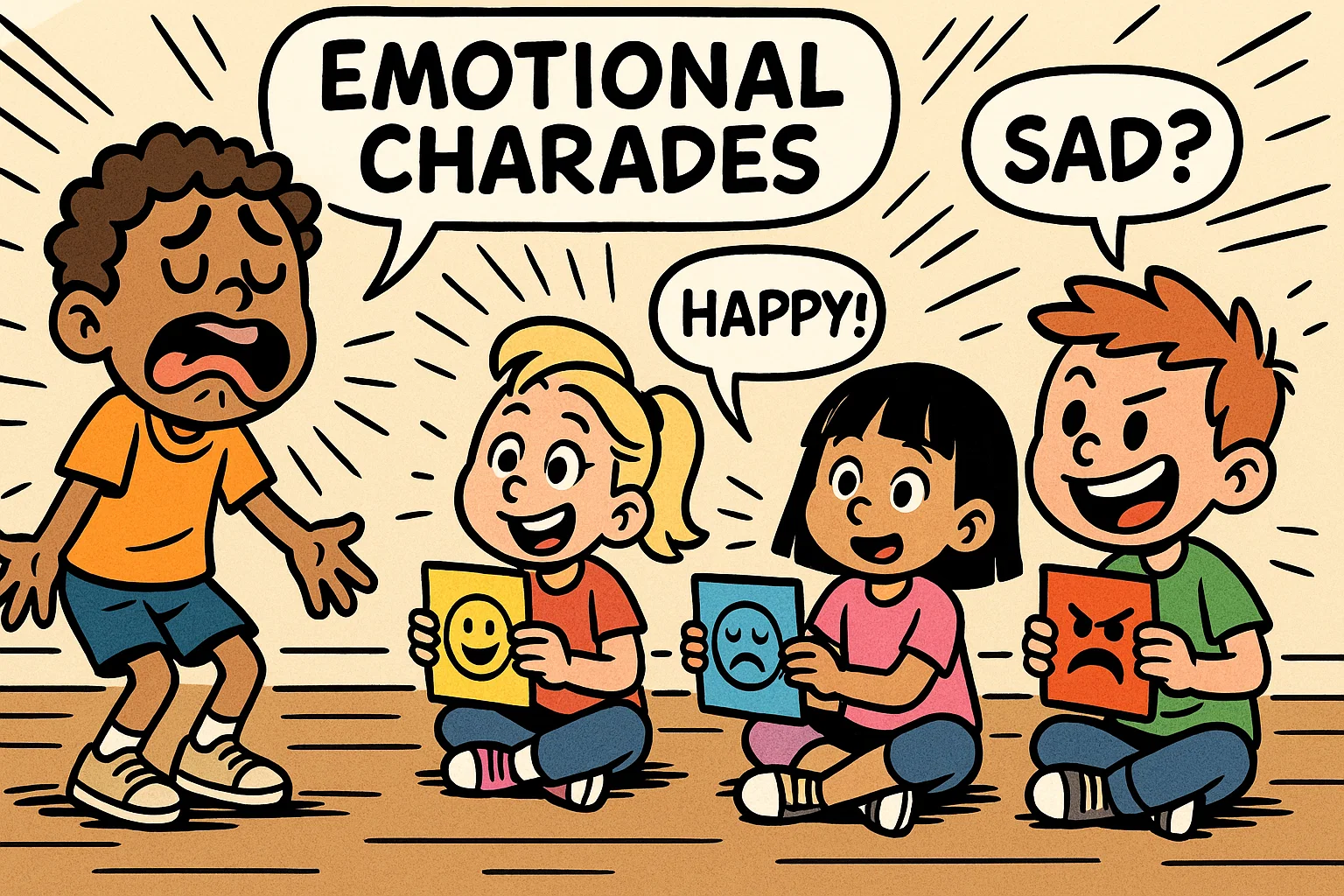
Games can make learning about emotions fun and low-pressure.
- Emotional Charades: Write different emotions on pieces of paper. Kids take turns acting out an emotion while others guess.
- Mood Cards: Use printable emotion cards and have your child sort them into groups (happy, sad, angry). You can also ask them to describe a time they felt each of those emotions.
Storytelling and Role Play
Stories are a powerful way to help children understand different emotional experiences and how to manage them.
- Read books about feelings: There are many excellent children’s books that talk about big emotions in an accessible way.
- Create your own stories: Make up a story about a character who feels a big emotion, and together with your child, create a plan for how the character can handle it. This can be especially helpful for older kids and teens who might feel more comfortable talking about a character’s problems than their own.
Creative Outlets
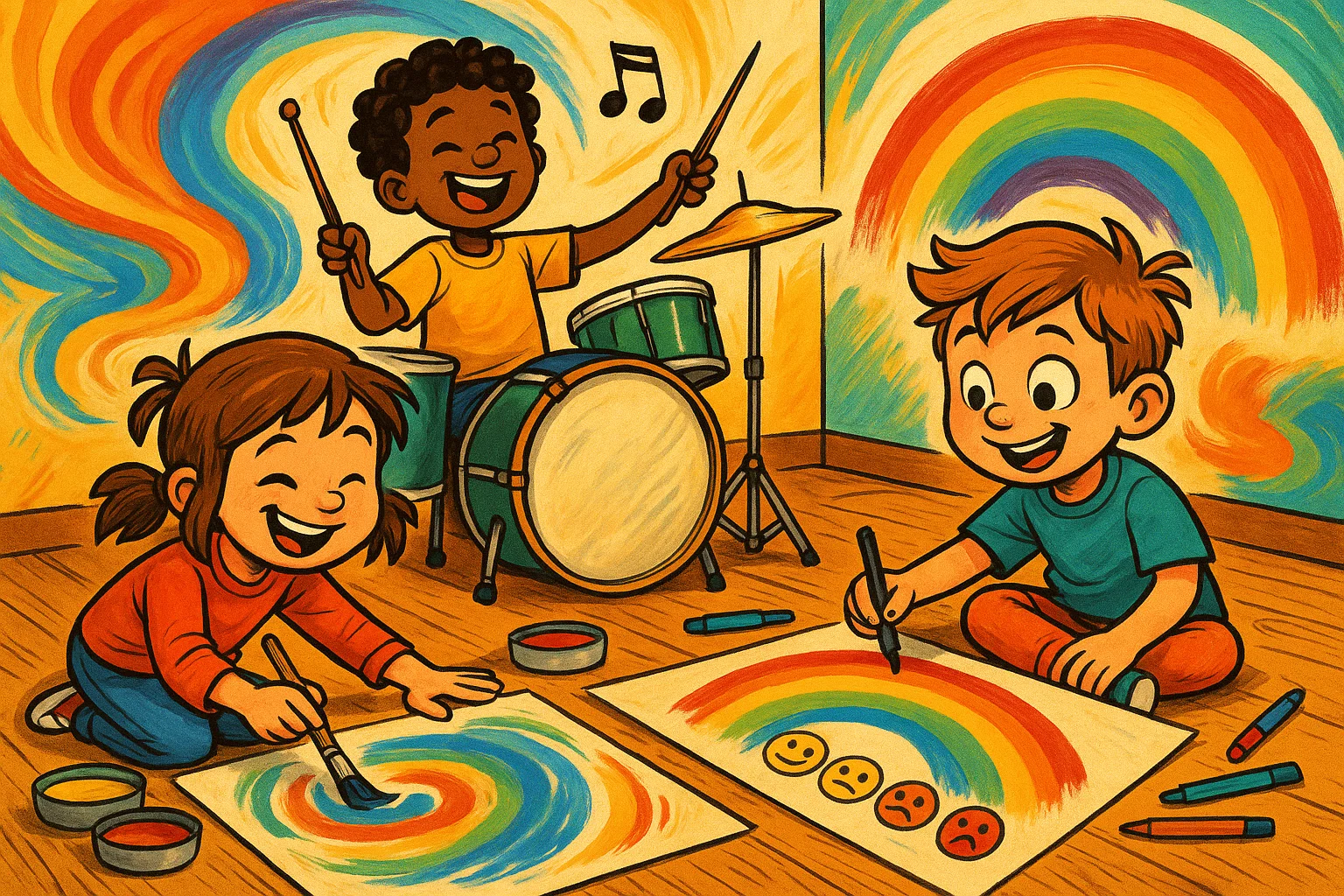
Arts and crafts provide a safe way for children to express their feelings without having to use words.
- Drawing emotions: Have your child draw a picture of what their anger or sadness looks like. What colors would it be? What shape?
- Music and movement: Let them dance to angry music to get out frustration or listen to soft, calming music to relax.
Why Emotional Regulation is Important for Kids
Teaching emotional regulation is one of the most important things you can do for your child’s development. It goes far beyond simply preventing tantrums; it sets them up for success in almost every area of their life.
Impact on Learning and School Success
A child with strong emotional control is better equipped for the classroom. When kids understand and manage their feelings, they’re more likely to:
- Focus on learning: Big emotions can be distracting. A child who is constantly worried or angry will struggle to pay attention to a teacher or a lesson. By regulating their emotions, they free up their cognitive resources to focus on learning.
- Build positive relationships: Managing emotions helps kids navigate friendships. They are better able to handle disagreements, share, take turns, and empathize with others, which leads to stronger social connections. The ability to manage emotions is a core component of emotional intelligence, which is a key predictor of success in school and beyond.
- Handle frustration: Learning inevitably involves challenges and mistakes. A child who can manage their frustration is more likely to persevere through a difficult math problem or a tricky writing assignment rather than giving up.
Long-Term Benefits for Mental Health
Research has repeatedly shown a strong link between early emotional regulation skills and long-term mental health. The ability to manage emotions is a cornerstone of resilience. Kids who develop this skill are better able to cope with stress, setbacks, and adversity.
According to research published in Child Development, early emotion-related self-regulation in childhood is strongly associated with better social adjustment and fewer behavioral and emotional difficulties later in life. This includes lower rates of anxiety, depression, and other mental health challenges. Teaching your child to regulate emotions helps build their inner strength and self-worth.
Challenges Some Kids Face
While all kids struggle with emotional regulation at times, some face specific challenges that make it harder. It’s important to understand that some of these difficulties are not a choice but are linked to a child’s neurological development.
- Developmental Delays: Kids with general developmental delays may have a harder time understanding complex emotional concepts.
- ADHD: Children with ADHD often struggle with executive function skills, which include emotional control. Their brains may have a harder time with impulse control and managing the intensity of their feelings.
- Autism Spectrum Disorder: Many children on the autism spectrum find it challenging to interpret social cues and understand their own emotional experiences, making emotional regulation a key area of focus for many occupational therapists and child development experts.
- Trauma: A child who has experienced trauma may have an overactive stress response, making it difficult for them to feel safe and calm their bodies when triggered.
For these children, a tailored approach and often professional support are essential.
Stages of Emotional Regulation Development
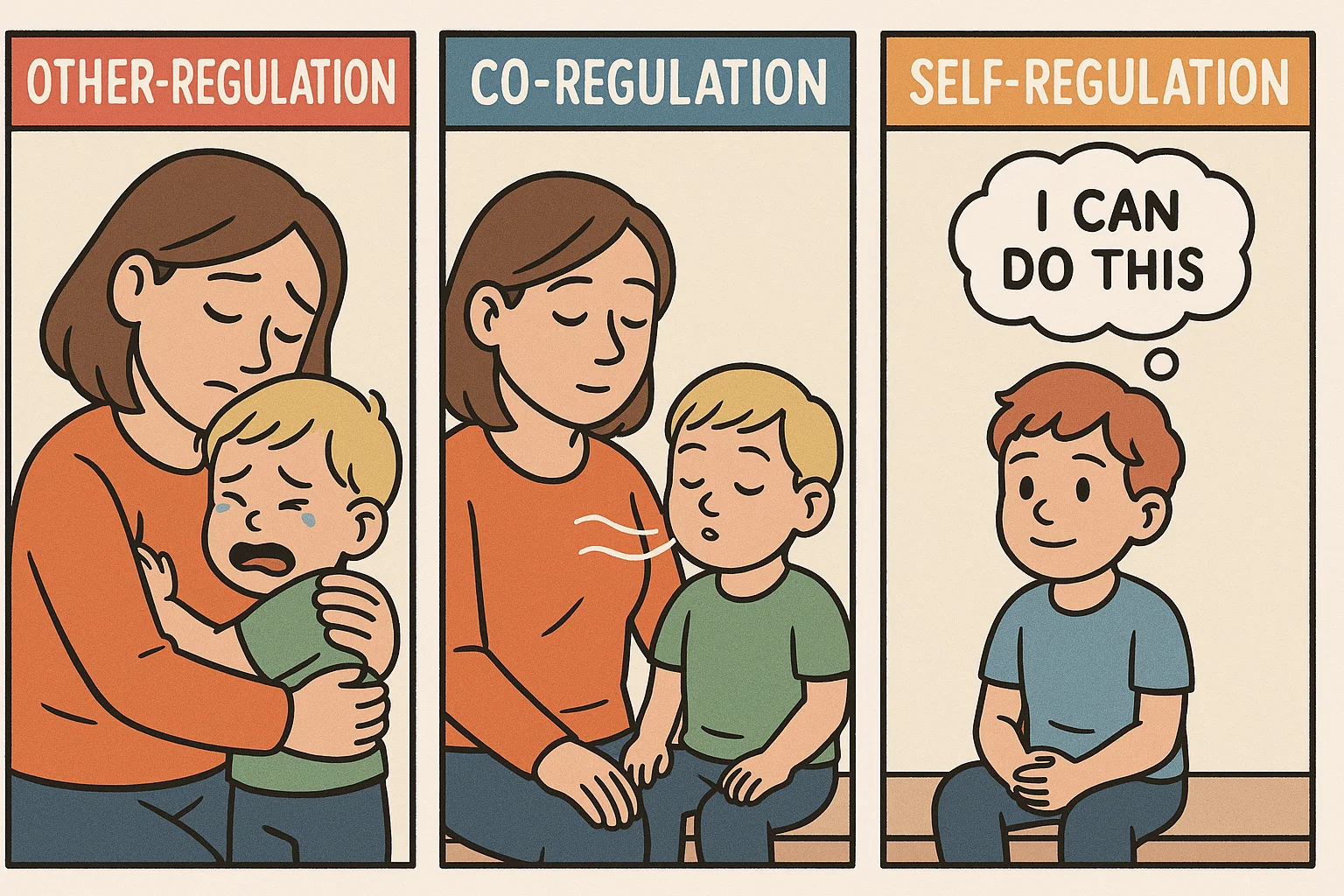
Emotional regulation is a skill that develops over time, and it’s important to understand the stages to meet your child where they are.
Other-Regulation (Parent Support)
In the early years, babies and toddlers rely completely on their caregivers to help them regulate. This is known as other-regulation or co-regulation. A parent soothing a crying infant by rocking them, talking in a calm voice, or providing a warm blanket is an example of other-regulation. The child’s nervous system is being regulated by the parent’s calm presence and actions. This early bonding experience teaches a child that they can feel safe and that their emotions are manageable.
Co-Regulation (Guided Practice)
As kids get a bit older, they move into the co-regulation stage. They still need adult support, but they begin to take on an active role in the process. This is the stage where you guide your child through calming strategies. For example, when your child is upset, you might say, “I see you’re feeling angry. Let’s take three deep breaths together.” By doing it with them, you’re modeling the skill and sharing the experience. You are a crucial partner in this process, providing the scaffolding they need to build their own internal skills.
Self-Regulation (Independence)
By the time they reach elementary school, most kids begin to develop genuine self-regulation. They are now able to identify their emotions and choose an appropriate calming strategy on their own. They might walk away from a conflict, use a deep breathing technique, or ask for a break without being prompted. This independence is a sign of a child’s growing emotional maturity and is the ultimate goal of all your hard work.
First Steps in Teaching Emotional Regulation
Before you can teach a child how to manage their emotions, they first have to be able to identify and understand them.
Recognizing Emotions
The first step in emotional regulation is for kids to identify their emotions. Kids can’t regulate what they don’t know how to name.
- Use Emotion Charts: Create a simple chart with different facial expressions and the corresponding feeling words (happy, sad, angry, surprised, etc.). Ask your child to point to how they feel.
- Discuss Feelings in Stories: When you read a book or watch a show, pause and ask, “How do you think that character feels right now? Why do they feel that way?” This helps kids understand the context of different emotion and why they occur.
- Play “Feeling Faces”: Make different facial expressions and have your child guess the emotion. Then have them make the faces for you to guess.
Matching Feelings with Body Sensations
Kids need to learn that emotions aren’t just thoughts; they have a physical component. This awareness is a powerful tool for helping kids manage their emotions before they become overwhelming.
- Anxiety/Fear: “When you feel scared, do you notice your heart beating fast or your tummy feeling fluttery?”
- Anger: “When you feel angry, do your muscles feel tight? Does your face feel hot?”
- Excitement: “When you’re excited, do you feel like you have a lot of energy or want to jump up and down?”
Helping your child notice these physical cues can be a powerful regulation tool. When they feel their body starting to get tense, they can use a regulation strategy before the feeling gets too big to handle.
Validating and Labeling Feelings
This is perhaps the most important first step. When a child is upset, the natural parental instinct is sometimes to try and fix it or minimize it (“Don’t be sad, it’s just a toy!”). Instead, the most effective way to help a child is to validate their feelings first.
- Listen actively: Get down to their level, make eye contact, and listen to what they’re saying.
- Reflect back their feelings: Use simple, calm language to show you understand. “I see you’re feeling really frustrated because that block tower fell down.” or “It looks like you’re sad because you miss your friend.”
- Avoid “Don’t” statements. For example, telling a child “Don’t be angry” can make them feel like their emotion is wrong. Instead, you can say, “It’s okay to feel angry. Let’s figure out a way to manage that anger.”
Building Motivation for Emotional Regulation
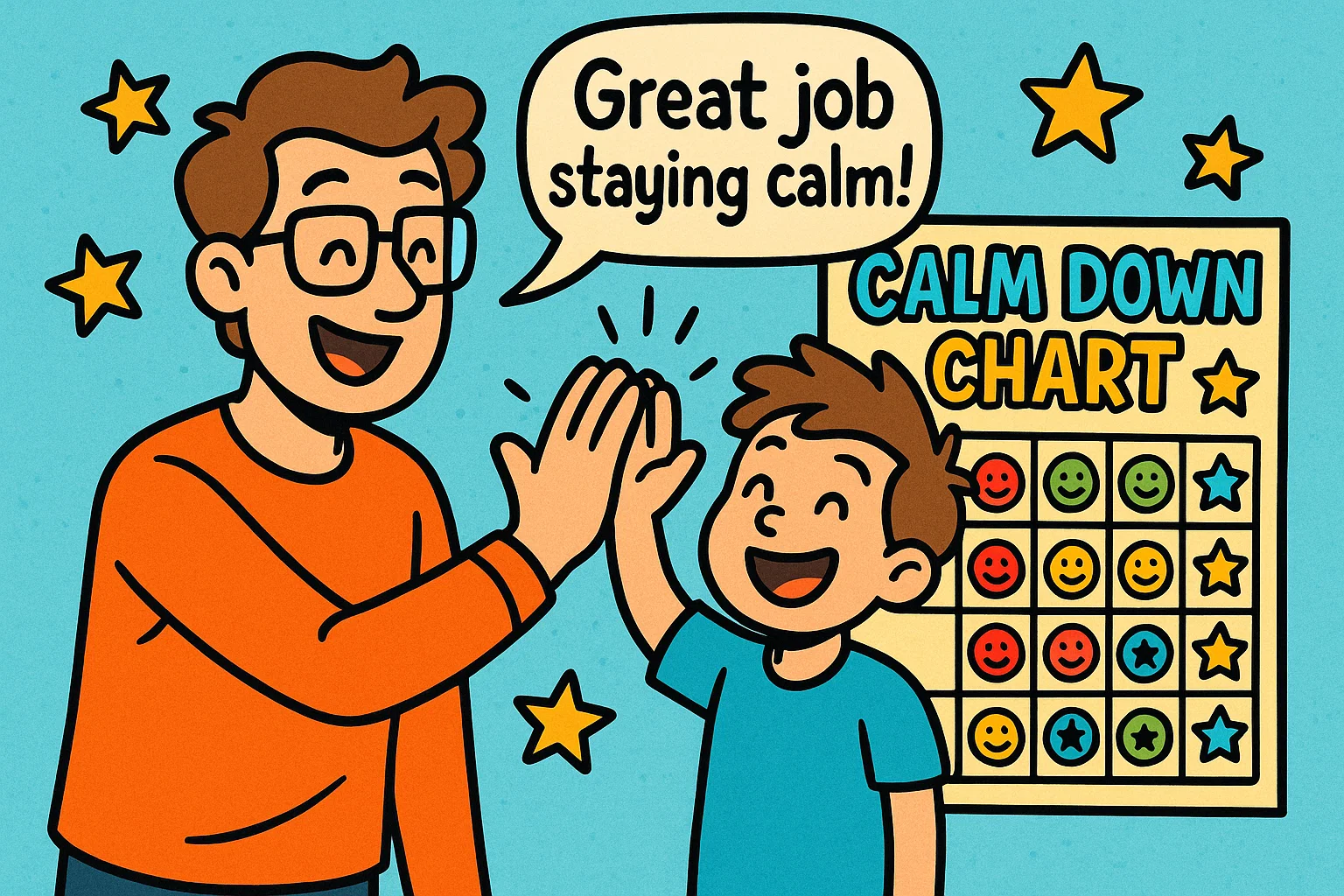
Teaching these skills is one thing; getting a child to use them is another. Building motivation is key.
Modeling Calm Behavior as Adults
Kids are always watching. One of the most effective ways to help kids understand emotional regulation is to model it yourself. When you feel frustrated, you can say out loud, “I’m feeling so frustrated right now. I’m going to take a deep breath before I respond.” This shows your child that even adults feel big emotions and that it’s normal to use regulation strategies.
Using Positive Reinforcement
Praise and encouragement go a long way in strengthening self-regulation. When your child successfully uses a coping skill, be sure to acknowledge it.
- Specific praise: “I noticed you took a deep breath when you felt frustrated just now. That was a great way to calm down!”
- Reward charts: For younger kids, a simple sticker chart can be a great way to encourage using regulation tools.
Turning Regulation into Routine
The more a skill is practiced, the more it becomes a habit. Make regulation activities part of your daily routine. This could be doing “balloon breathing” before bed or having a “mindful moment” after school to decompress.
What to Do After Kids Self-Regulate
The work doesn’t end once the storm has passed. The moments after a child successfully regulates their emotions are a prime opportunity for learning and connection.
Reflection and Self-Awareness
Once your child is calm, you can gently ask them to reflect on what happened.
- “How did your body feel when you were angry?”
- “What helped you calm down? Was it the deep breaths, or did you need to go to your calm-down corner?”
This encourages kids to use their self-reflection skills to better understand what works for them.
Building Problem-Solving Skills
Once they’re calm, you can talk about the trigger and brainstorm solutions for the future.
- “You were upset that your friend took your toy. What are some things you could say or do next time instead of pushing them?”
- “What could you do if you feel that way at school?”
This helps them learn emotional regulation is not just about coping in the moment but also about thinking ahead.
Strengthening Parent-Child Connection
The calm moments are for bonding. Snuggle, read a book, or just sit quietly together. This reinforces to your child that you are a safe person for them, even when they’re having big feelings. This connection is the foundation of effective emotional regulation.
Resources and Tools for Parents and Teachers
Printable Emotion Cards and Worksheets
Many websites offer free, downloadable emotion charts and worksheets. The Zones of Regulation framework, for example, is a widely-used tool that color-codes feelings to help children identify their emotional state.
- Green Zone: Feeling calm, happy, focused.
- Yellow Zone: Feeling a little worried, silly, or frustrated.
- Red Zone: Feeling angry, out of control, or panicked.
- Blue Zone: Feeling sad, tired, or sick.
Professional Support Options
If your child’s emotional outbursts are frequent, intense, and are impacting their daily life, it may be time to seek professional help. A child counselor, psychologist, or an occupational therapist who specializes in sensory processing can provide a personalized plan to help with self-regulation.
Recommended Books and Apps
- For Kids: The Color Monster: A Pop-Up Book of Feelings by Anna Llenas is a great starting point for younger kids.
- For Parents: The Whole-Brain Child by Daniel J. Siegel and Tina Payne Bryson offers a practical, neurobiology-based approach to parenting.
- Apps: The Headspace and Calm apps offer guided meditations and breathing exercises for both kids and adults.
Frequently Asked Questions
What age should kids start learning emotional regulation?
Kids start learning emotional regulation from birth through co-regulation with their caregivers. Toddlers and preschoolers are at a great age to begin learning to name their feelings, while elementary school is an ideal time to introduce specific coping strategies.
How long does it take for kids to develop self-regulation skills?
This is a lifelong process. While kids may develop some foundational skills by age 5-7, the ability to manage emotions and behaviors effectively continues to evolve through the teen years and even into adulthood. Be patient—it’s a journey rather than a destination.
Can emotional regulation help kids with ADHD or autism?
Yes, absolutely. For kids with ADHD or autism, emotional regulation is a critical skill. Strategies like using a visual schedule, sensory tools, and a calm-down space can be especially helpful for these children, as they provide a clear, predictable structure to help manage their emotional experiences.
What if my child resists calming activities?
If your child resists, don’t force it in the heat of the moment. The best time to introduce and practice these strategies is when your child is already calm. You can say, “Let’s practice our balloon breathing now, just for fun.” When the time comes that they need a regulation tool, they’ll have the muscle memory to use it.
